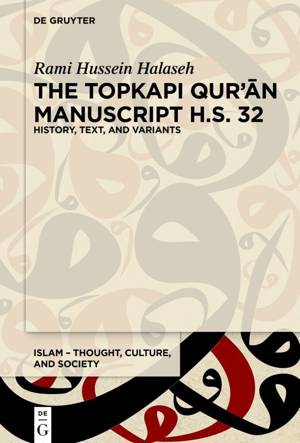
- Afhalen na 1 uur in een winkel met voorraad
- Gratis thuislevering in België vanaf € 30
- Ruim aanbod met 7 miljoen producten
- Afhalen na 1 uur in een winkel met voorraad
- Gratis thuislevering in België vanaf € 30
- Ruim aanbod met 7 miljoen producten
Omschrijving
This study presents a comprehensive and systematic examination of a revered Qurʾān manuscript, commonly attributed to the third Islamic Caliph, ʿUthmān b. ʿAffān (d. 35/656), housed at the Topkapı Palace Museum in Istanbul, Türkiye (identified as H.S. 32). Halaseh offers a meticulous analysis of the manuscript's codicological, paleographic, and orthographic characteristics, explores its emendations, production date, and traces the manuscript's journey first to Cairo and then to Istanbul. Additionally, the study examines and categorizes its textual variants, including what are considered today as non-canonical and some that are not previously attested in the major qirāʾāt literature. This work not only sheds light on the transmission of the Qurʾānic text but also establishes a comprehensive framework for researching Qurʾān manuscripts. By integrating methods for examining these manuscripts as both physical artifacts and scriptural texts, Halaseh presents a holistic methodological approach to their scholarly study.
Specificaties
Betrokkenen
- Auteur(s):
- Uitgeverij:
Inhoud
- Aantal bladzijden:
- 299
- Taal:
- Engels
- Reeks:
- Reeksnummer:
- nr. 7
Eigenschappen
- Productcode (EAN):
- 9783111455259
- Verschijningsdatum:
- 3/09/2024
- Uitvoering:
- Hardcover
- Formaat:
- Genaaid
- Afmetingen:
- 156 mm x 234 mm
- Gewicht:
- 598 g

Alleen bij Standaard Boekhandel
Beoordelingen
We publiceren alleen reviews die voldoen aan de voorwaarden voor reviews. Bekijk onze voorwaarden voor reviews.











